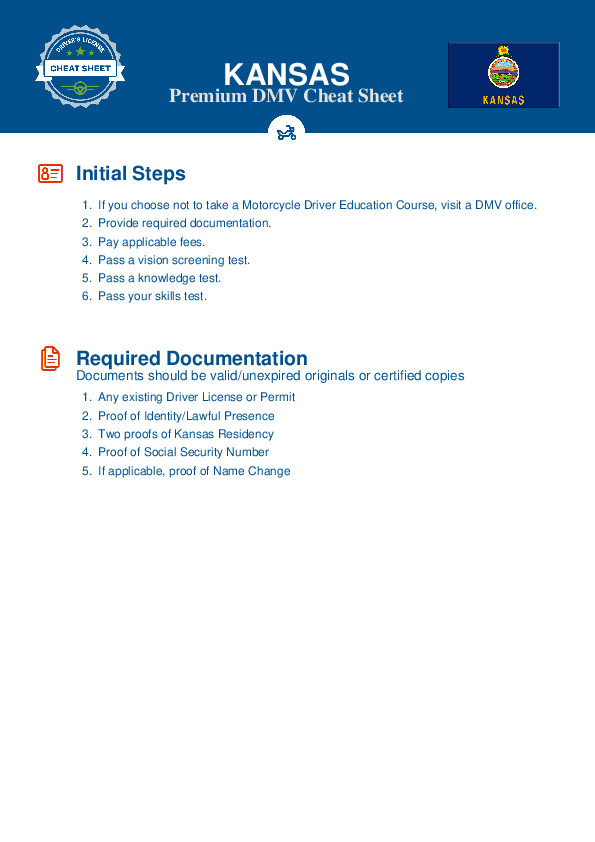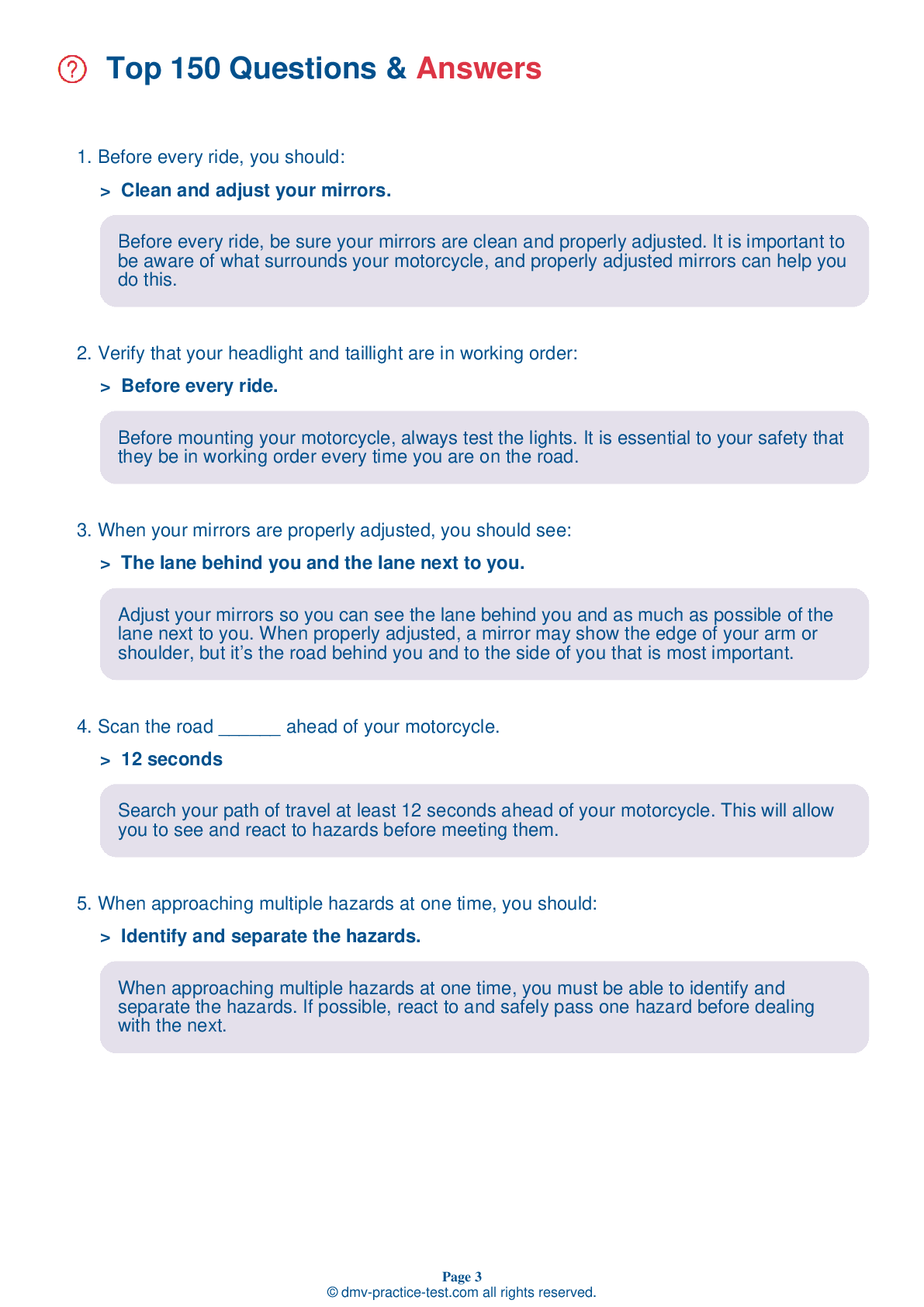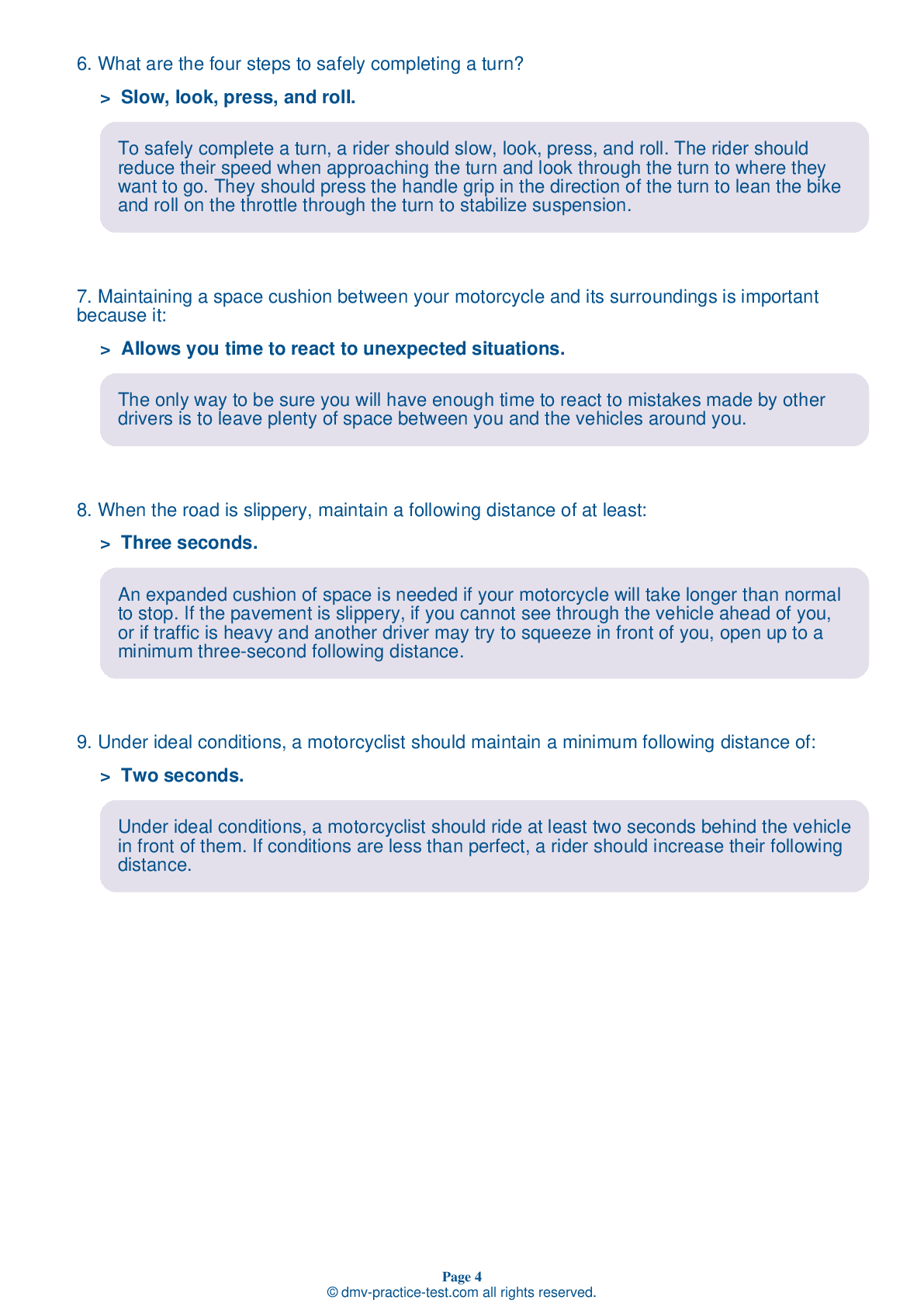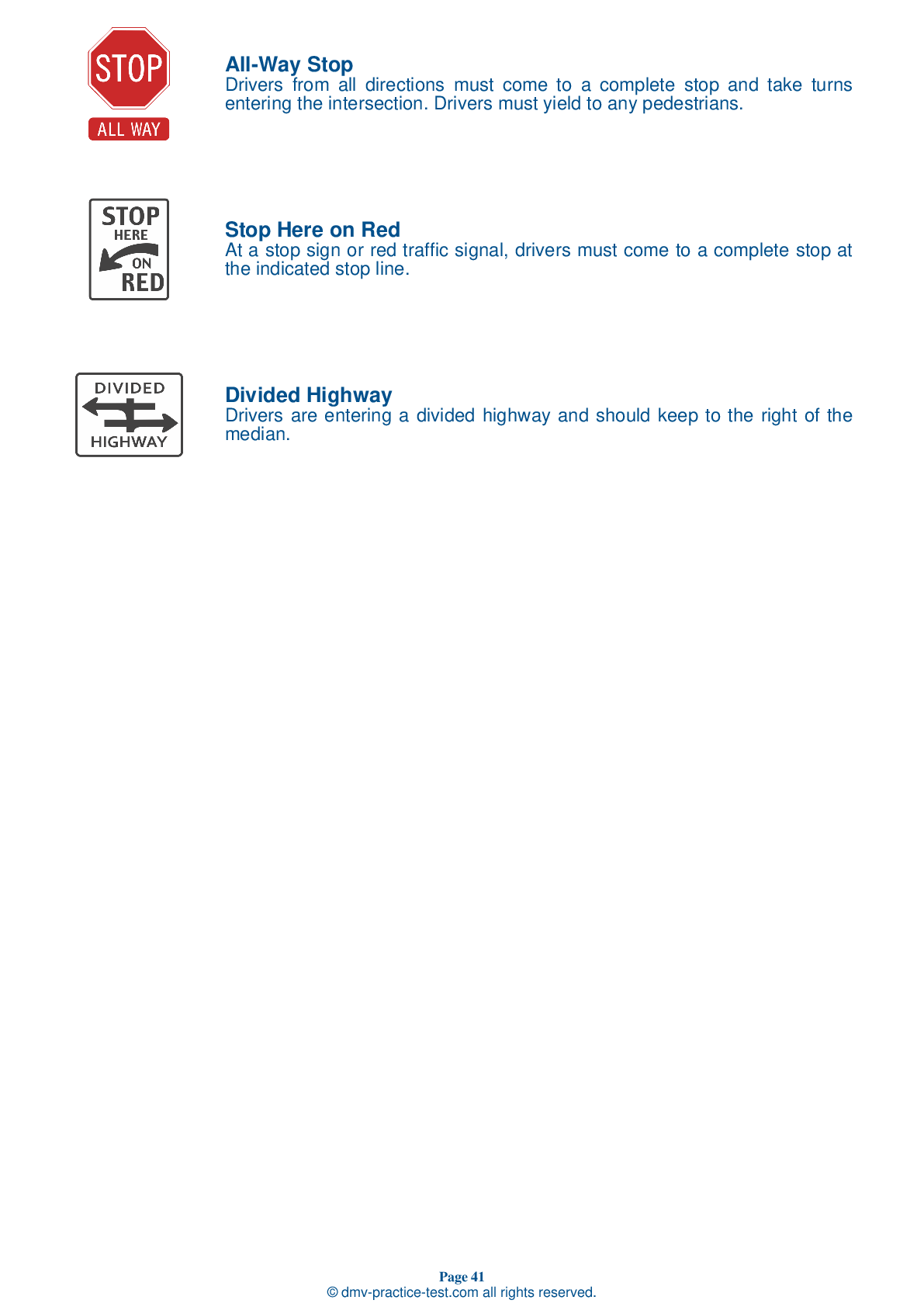Motorcycle Test | License KS 2025 | FREE Online Practice! #2 Page 4 of 4
Take this FREE motorcycle test (license in KS 2025) to check your knowledge of the road rules. To improve your results, download a motorcycle handbook online, study theory, and practice for free on our website. Still worried about how to get a motorcycle license in Kansas in 2025? Check our website for more sample tests, train as much as possible, and boost your grades!
19 . Alcohol reaches the brain ________ being consumed.
Alcohol reaches the brain and begins affecting the drinker's riding abilities within minutes of being consumed. Operating any motor vehicle while under the influence of alcohol is illegal and dangerous.
20 . When approaching multiple hazards at one time, you should:
When approaching multiple hazards at one time, you must be able to identify and separate the hazards. If possible, react to and safely pass one hazard before dealing with the next.
21 . Which lane position is usually best for minimizing the risk of other vehicles sharing your lane?
Riding in the center portion of your lane can discourage other drivers from trying to squeeze into your lane to drive next to you. Additionally, riding in the center portion of your lane when traveling behind a car generally ensures that you will appear in the middle of the vehicle's rearview mirror, where the driver is most likely to notice you.
22 . The first thing you should do if your throttle becomes stuck is:
If your throttle becomes stuck, try twisting it back and forth several times. If this does not free your throttle, immediately operate the engine cut-off switch and pull in the clutch at the same time.
23 . On a motorcycle, which brake provides the most stopping power?
The front brake provides about three-quarters of a motorcycle's total stopping power. Use both the front and rear brakes every time you stop.
24 . Mirror checks should be done:
Frequent mirror checks should be part of your normal scanning routine. Additionally, make a special point of using your mirrors before changing lanes, when stopping at an intersection, and before slowing down.
25 . Mirrors on motorcycles:
The mirrors of motorcycles have blind spots, just like those of cars. Always turn your head to check your blind spot before changing lanes.
See the exact questions that will be on the 2025 Kansas DMV exam.
99.2% of people who use the cheat sheet pass the FIRST TIME
Jeneen was tired of paying $5/gallon. She got herself a scooter that required the motorcycle license. She studyed the motorcycle test cheat sheet and passed her test the next day!
Christopher tells us how he knew nothing prior to obtaining the motorcycle study guide, and he only got one question wrong because he clicked on the wrong answer by mistake.



